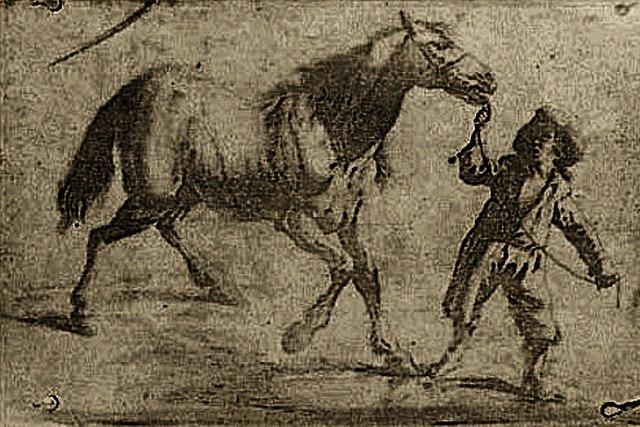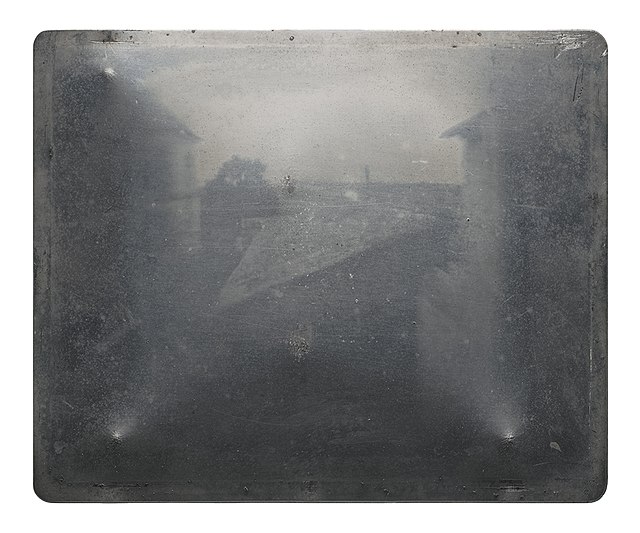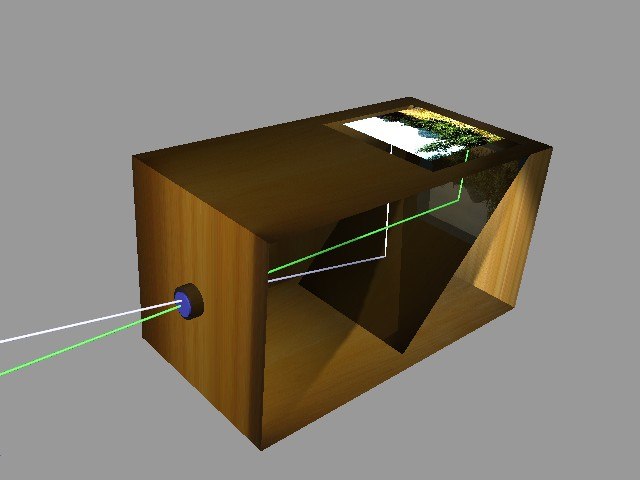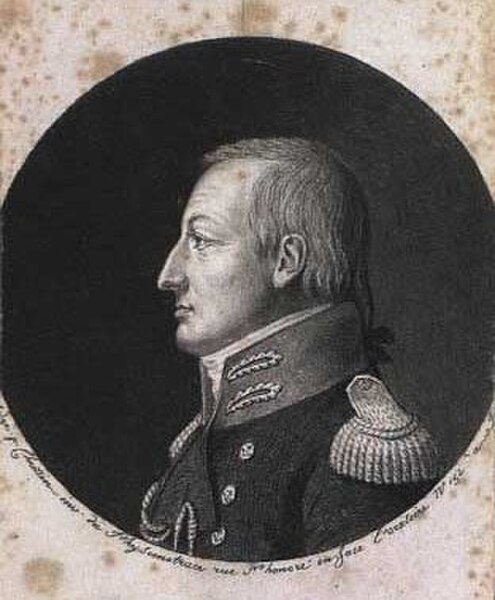Joseph Nicéphore Niépce was a French inventor and one of the earliest pioneers of photography. Niépce developed heliography, a technique he used to create the world's oldest surviving product of a photographic process: a print made from a photoengraved printing plate in 1825. In 1826 or 1827, he used a primitive camera to produce the oldest surviving photograph of a real-world scene. Among Niépce's other inventions was the Pyréolophore, one of the world's first internal combustion engines, which he conceived, created, and developed with his older brother Claude Niépce.
Portrait circa 1820
Niépce's birthplace at Chalon-sur-Saône, with a plaque in his memory
One of the three earliest known photographic artifacts, created by Nicéphore Niépce in 1825. It is an ink-on-paper print, but the printing plate used to make it was photographically created by Niépce's heliography process. It reproduces a 17th-century Flemish engraving.
The earliest saved photographic image (Heliograph on pewter plate) from 1826 or 1827 by Joseph Nicéphore Niépce, taken at Le Gras, France.
The history of photography began with the discovery of two critical principles: The first is camera obscura image projection, the second is the discovery that some substances are visibly altered by exposure to light. There are no artifacts or descriptions that indicate any attempt to capture images with light sensitive materials prior to the 18th century.
Principle of the camera obscura
Principle of a box camera obscura with mirror
Physiognotrace of Hans Lindholm by Gilles-Louis Chrétien
The earliest known surviving heliographic engraving, made in 1822. It was printed from a metal plate made by Joseph Nicéphore Niépce with his "heliographic process". The plate was exposed under an ordinary engraving and copied it by photographic means. This was a step towards the first permanent photograph from nature taken with a camera obscura.







